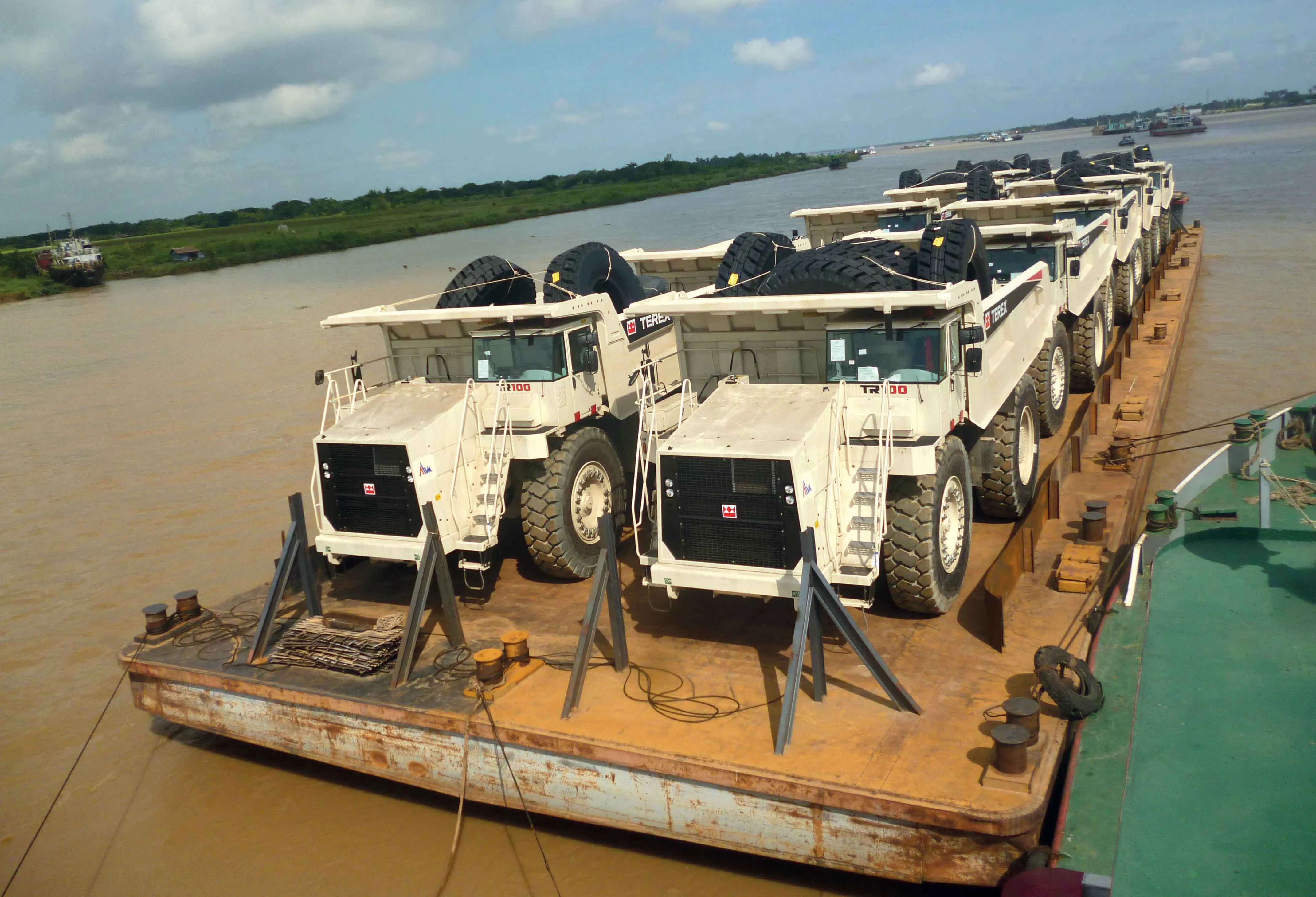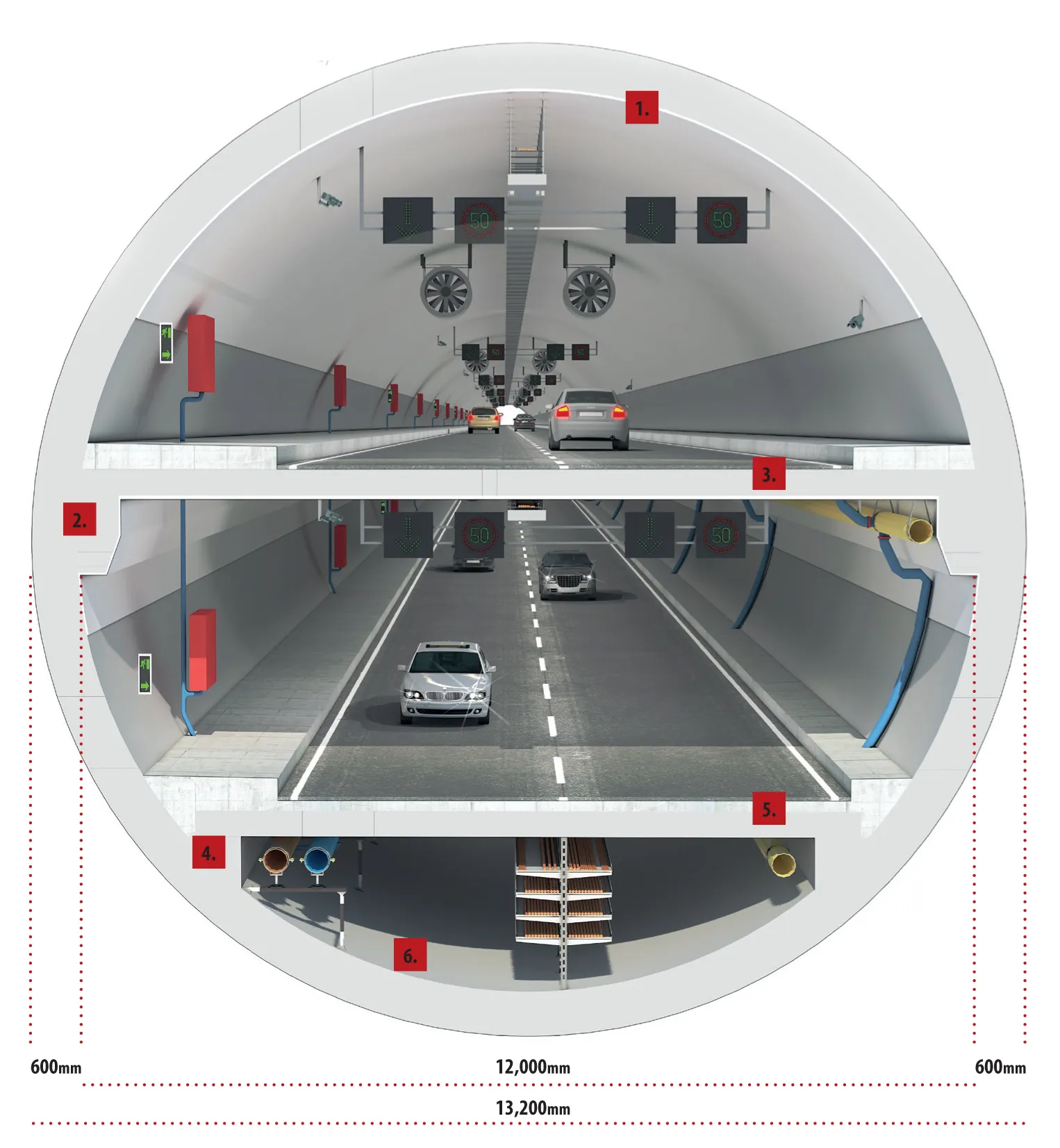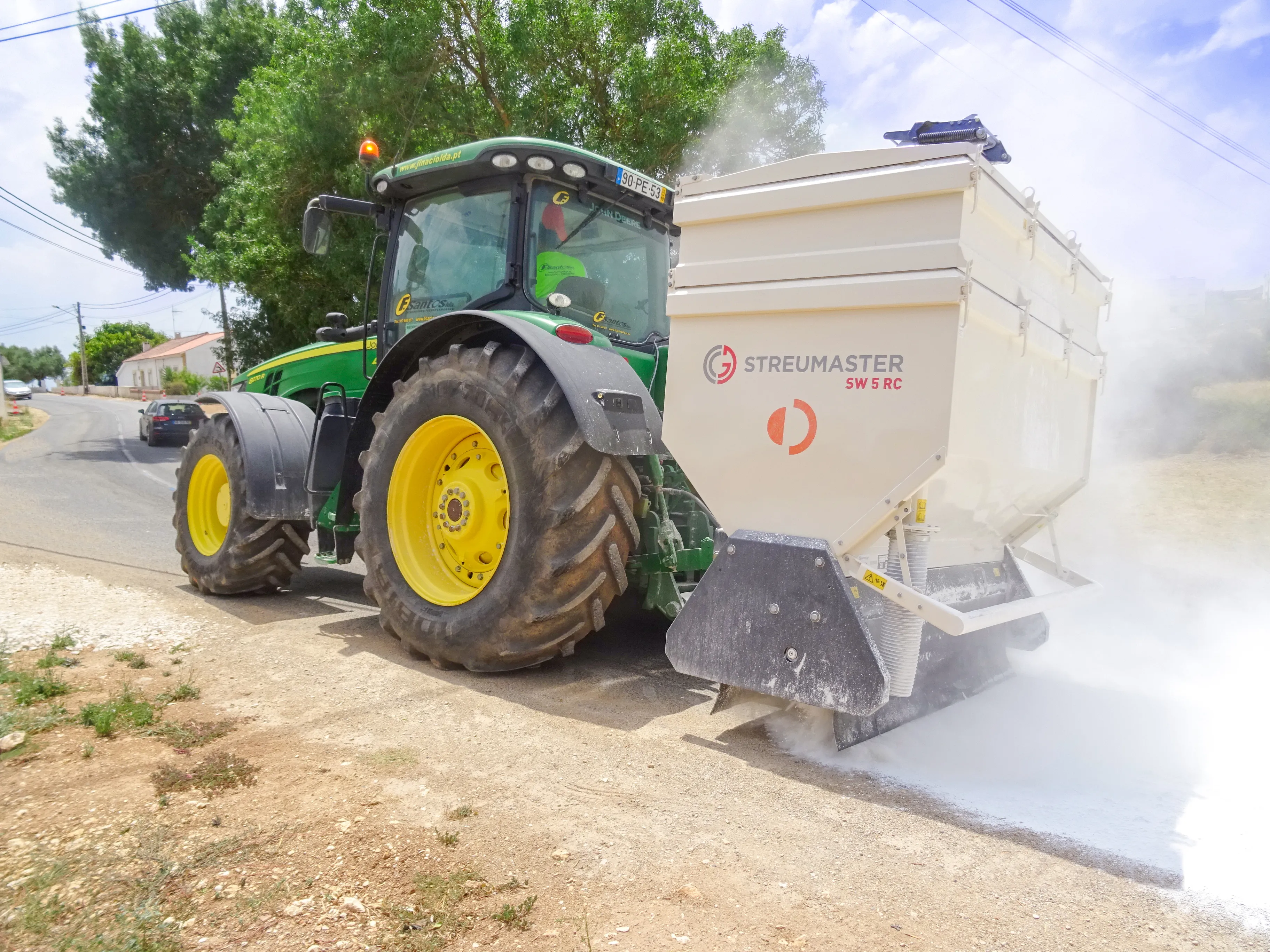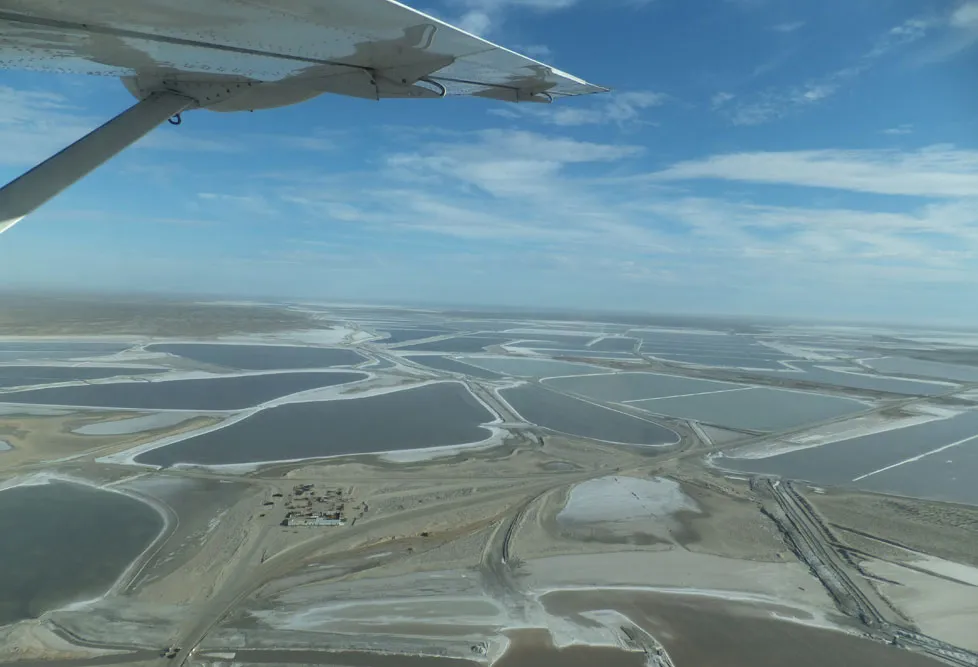A fleet of 29 Terex Trucks recently made a journey of 20,800km by road, river and sea
The machines were delivered to the site in Myanmar, to work in a particularly tough extraction operation.
The fleet was delivered to a site in Kachin State in northern Myanmar, having been ordered by three local firms to carry blasted material haul distances of around 2km for processing.
The three companies; Aung Hein Min Gems, Yar Za Htar Ne Gems and Myanmar Thura Gems contacted Yangon-based dealer Aung Hein Min
June 21, 2016
Read time: 4 mins

A fleet of 29 Terex Trucks recently made a journey of 20,800km by road, river and sea
The machines were delivered to the site in Myanmar, to work in a particularly tough extraction operation.
The fleet was delivered to a site in Kachin State in northern Myanmar, having been ordered by three local firms to carry blasted material haul distances of around 2km for processing.
The three companies; Aung Hein Min Gems, Yar Za Htar Ne Gems and Myanmar Thura Gems contacted Yangon-based dealer Aung Hein Min (AHM Heavy) to supply the machines. The order was substantial as it comprised 19 TR100s with capacities of 91tonnes and 10 TR60s with capacities of 55tonnes.
For two of the customers, haulers from8081 Terex Trucks had already proved their worth. Aung Hein Min Gems had previously ordered six 38tonne capacity TA400 articulated haulers, while Yar Za Htar Ne Gems had 20 of the TA400s in its fleet. However the other company was new to the brand but opted for these machines as the neighbouring firms had seen good performance with their earlier units of the same brand.
Transporting the machines over 20,800km from the manufacturing plant in Motherwell, Scotland to the isolated extraction sites located at Phakant in Kachin State, northern Myanmar presented a challenge however.
The first part of the journey took five weeks, with the trucks being transported 16,668km by containership to Yangon, via Singapore. Once in Yangon the trucks were then transferred onto three barges, with a maximum of 10 trucks/barge.
However, loading the trucks onto the barges was no easy task according to AHM Heavy. To avoid capsizing the barges, the trucks were loaded in a shuffle sequence to maintain the balance until all machines were in place. Water levels were also critical as had the water level been too low, it would not have been sufficient to support the barge and its cargo. Converesely had the water level been too high the river would have been fast flowing and this could have seen a major risk from the barge and trucks being swept away.
The loading work was carried out safely however and the trucks then began their journey along the Uyu River to Phakant’s closest port, Kathar. This part of the trip, a distance of just under 966km, took a further three weeks.
Once the trucks were again unloaded, the final 193km portion of the journey took just three days, with the trucks driving to the site equipment yards in Phakant. But even this part of the journey was difficult. The trucks were delivered during Myanmar’s wet season so the roads along the route were often flooded and very muddy. Moreover, the roads had not been primarily designed for large off-highway haulers with their wider track design. However being off-highway haulers, the machines were able to cope with the difficult conditions and did reach the site without incident.
When the fleet of machines arrived at the final destination, the units were then tested and commissioned by AHM Heavy’s engineers. With this process completed, the trucks then had to be registered with the Myanmar Government. This new registration scheme takes three to four weeks and is required of all existing and new equipment operated at the country’s extraction sites.
Since being commissioned, the trucks have been working almost round the clock. However, the machines are only operated during Myanmar’s dry season, which runs from roughly November to May and for the remainder of the year, they have to be parked as conditions are too difficult for full extraction work at the site.
The machines were delivered to the site in Myanmar, to work in a particularly tough extraction operation.
The fleet was delivered to a site in Kachin State in northern Myanmar, having been ordered by three local firms to carry blasted material haul distances of around 2km for processing.
The three companies; Aung Hein Min Gems, Yar Za Htar Ne Gems and Myanmar Thura Gems contacted Yangon-based dealer Aung Hein Min (AHM Heavy) to supply the machines. The order was substantial as it comprised 19 TR100s with capacities of 91tonnes and 10 TR60s with capacities of 55tonnes.
For two of the customers, haulers from
Transporting the machines over 20,800km from the manufacturing plant in Motherwell, Scotland to the isolated extraction sites located at Phakant in Kachin State, northern Myanmar presented a challenge however.
The first part of the journey took five weeks, with the trucks being transported 16,668km by containership to Yangon, via Singapore. Once in Yangon the trucks were then transferred onto three barges, with a maximum of 10 trucks/barge.
However, loading the trucks onto the barges was no easy task according to AHM Heavy. To avoid capsizing the barges, the trucks were loaded in a shuffle sequence to maintain the balance until all machines were in place. Water levels were also critical as had the water level been too low, it would not have been sufficient to support the barge and its cargo. Converesely had the water level been too high the river would have been fast flowing and this could have seen a major risk from the barge and trucks being swept away.
The loading work was carried out safely however and the trucks then began their journey along the Uyu River to Phakant’s closest port, Kathar. This part of the trip, a distance of just under 966km, took a further three weeks.
Once the trucks were again unloaded, the final 193km portion of the journey took just three days, with the trucks driving to the site equipment yards in Phakant. But even this part of the journey was difficult. The trucks were delivered during Myanmar’s wet season so the roads along the route were often flooded and very muddy. Moreover, the roads had not been primarily designed for large off-highway haulers with their wider track design. However being off-highway haulers, the machines were able to cope with the difficult conditions and did reach the site without incident.
When the fleet of machines arrived at the final destination, the units were then tested and commissioned by AHM Heavy’s engineers. With this process completed, the trucks then had to be registered with the Myanmar Government. This new registration scheme takes three to four weeks and is required of all existing and new equipment operated at the country’s extraction sites.
Since being commissioned, the trucks have been working almost round the clock. However, the machines are only operated during Myanmar’s dry season, which runs from roughly November to May and for the remainder of the year, they have to be parked as conditions are too difficult for full extraction work at the site.








